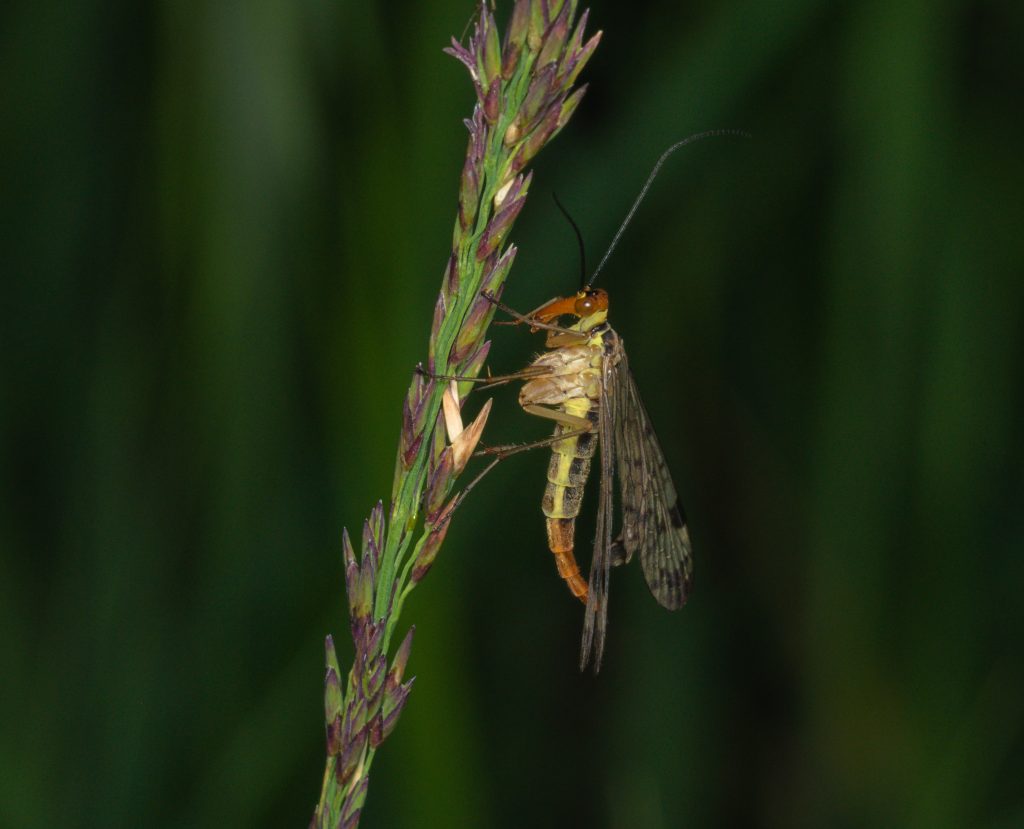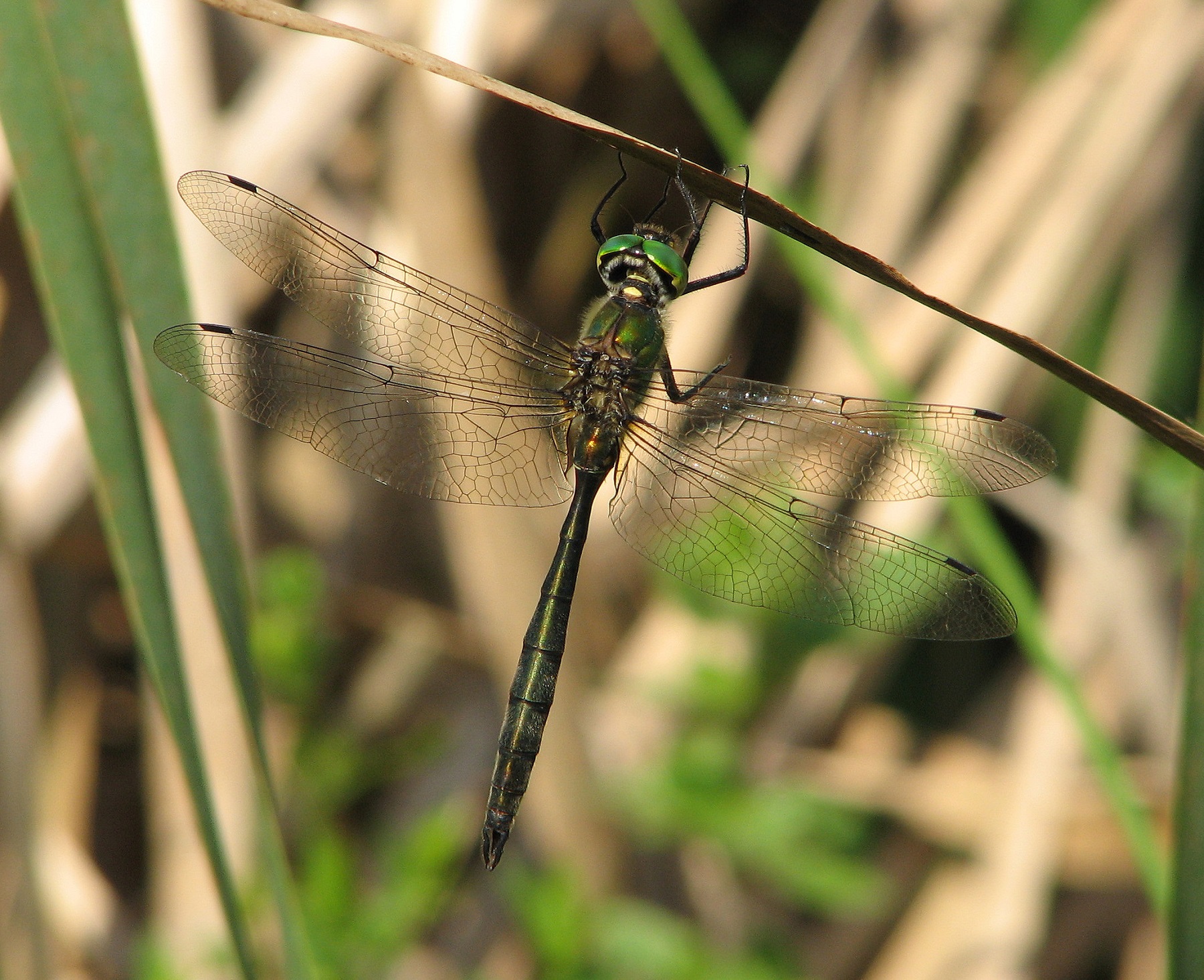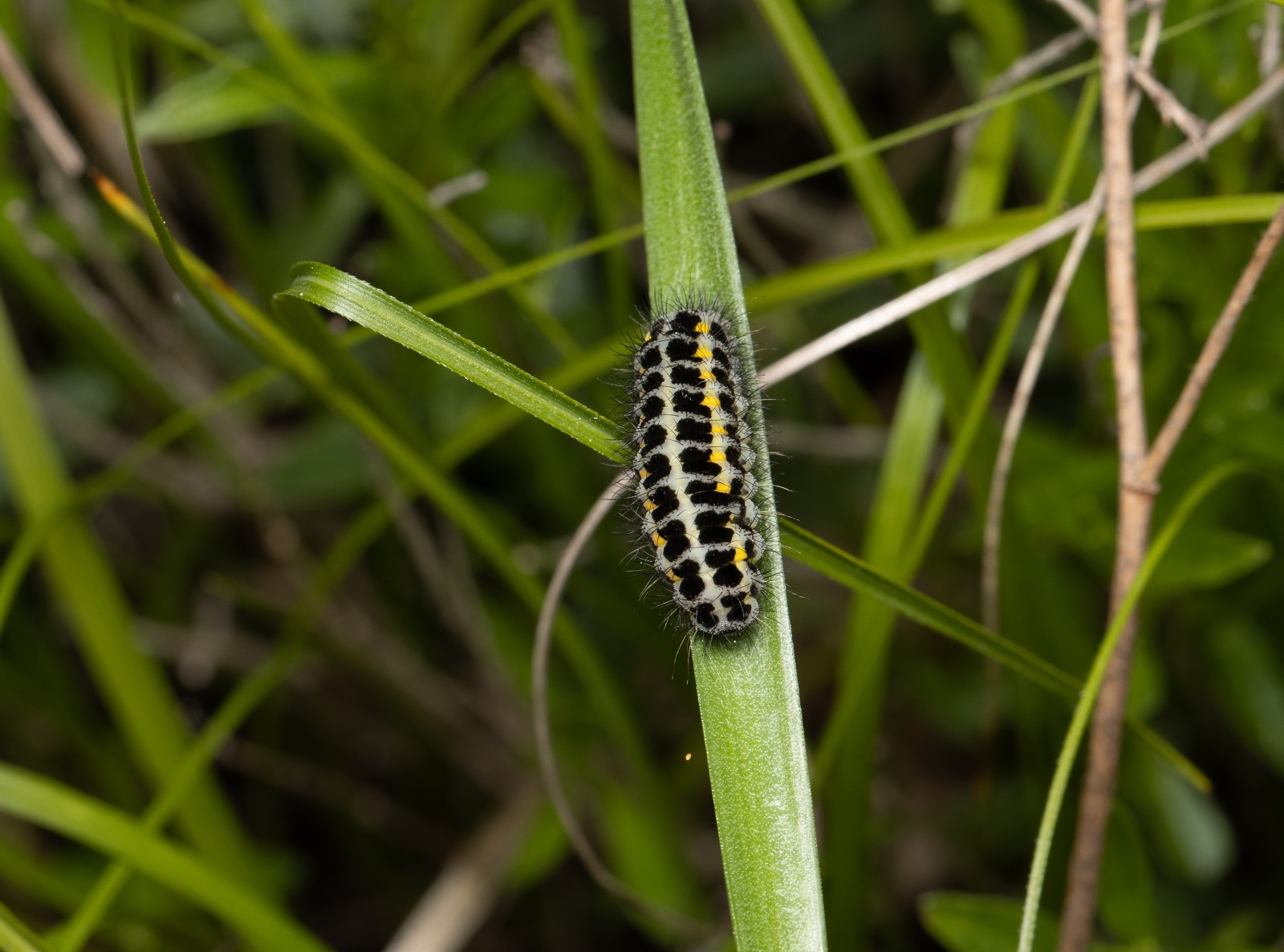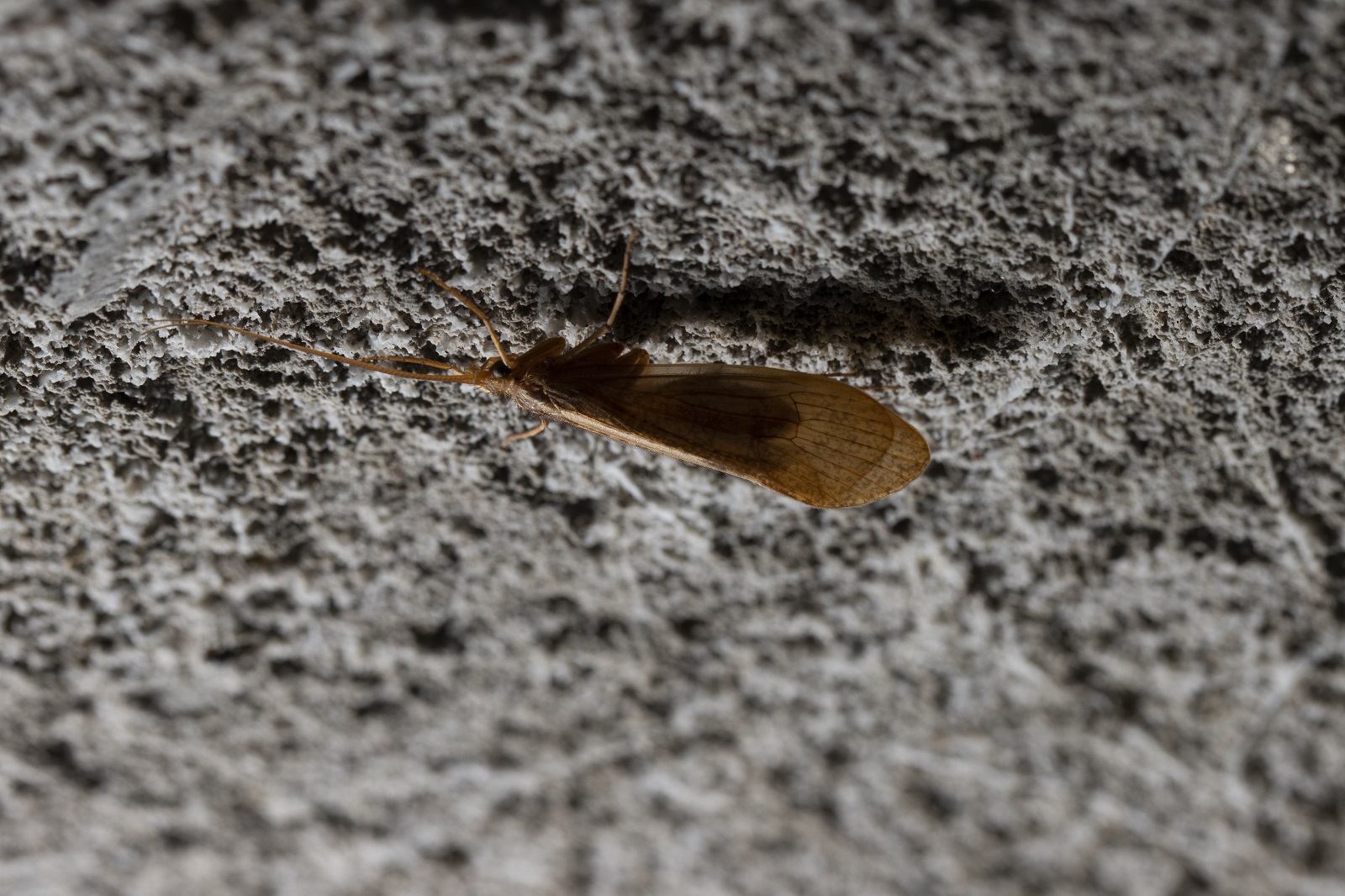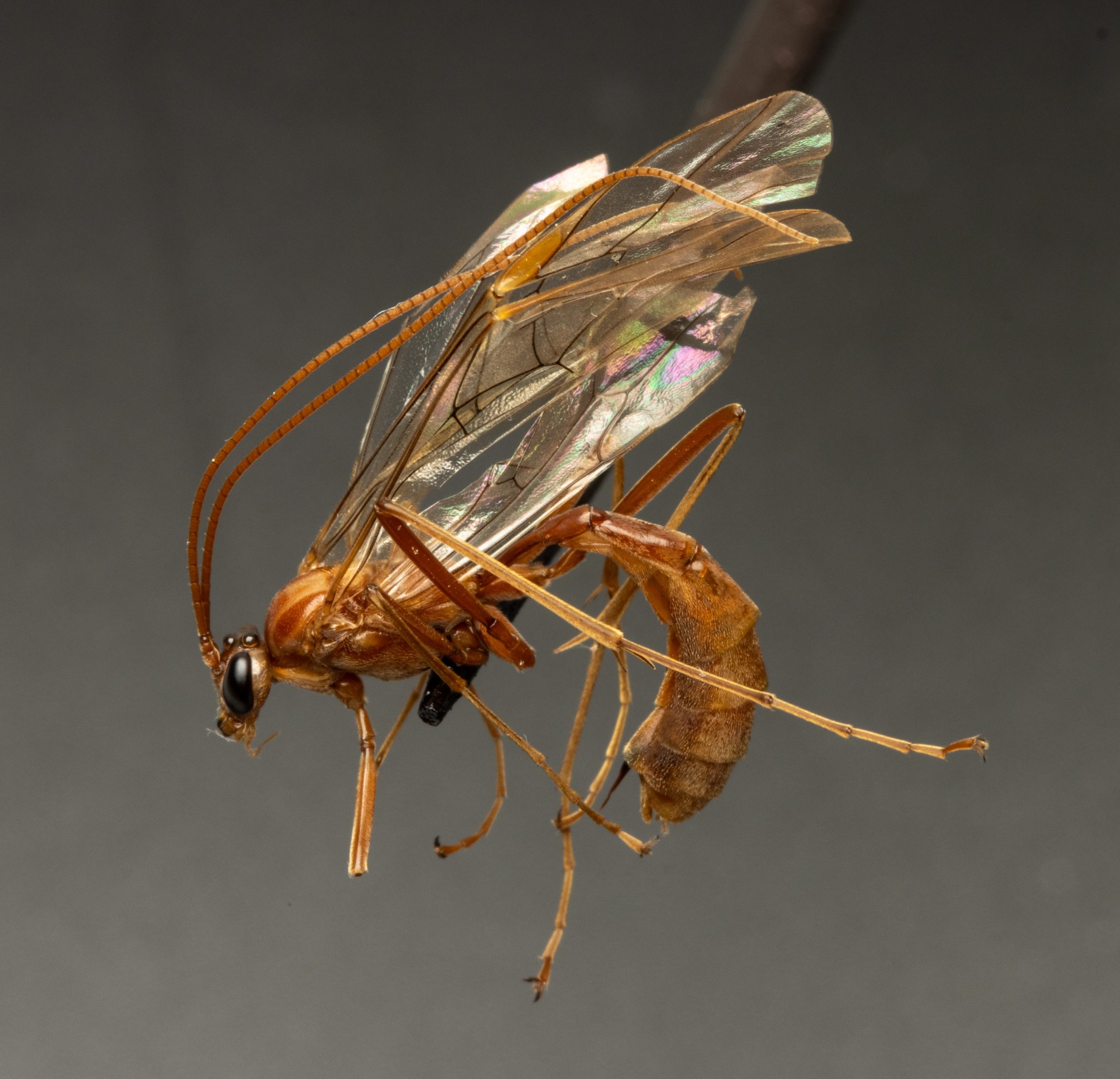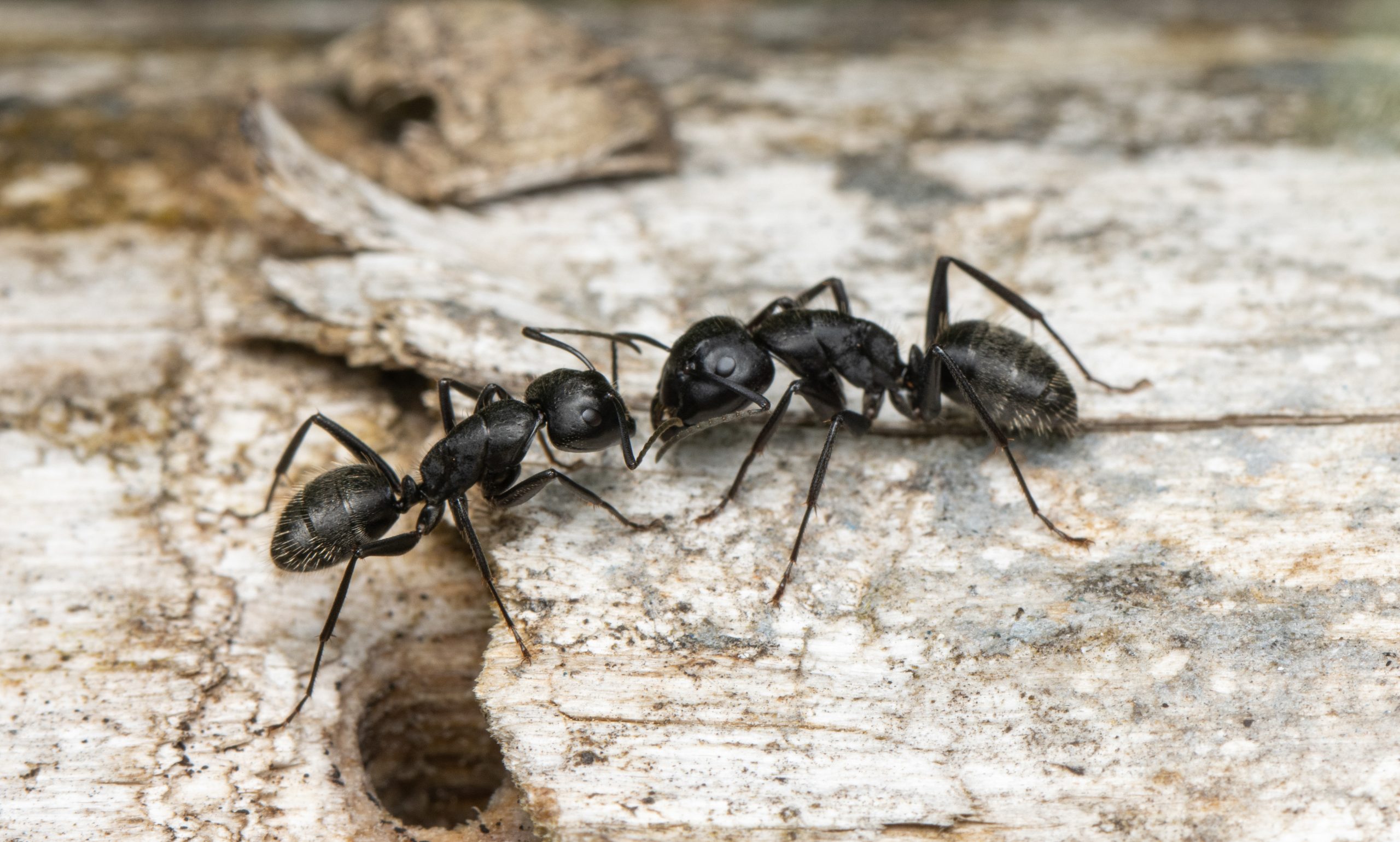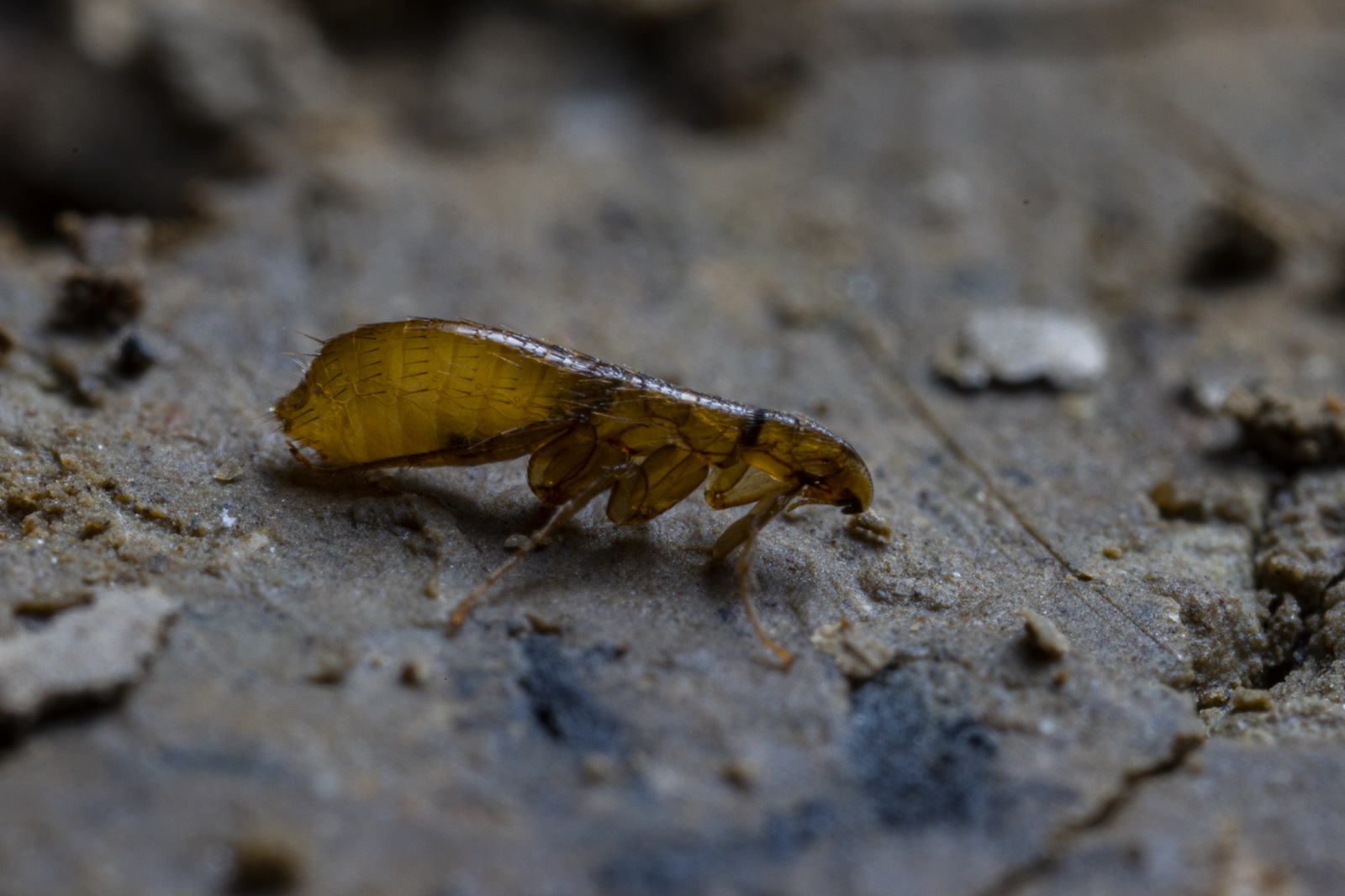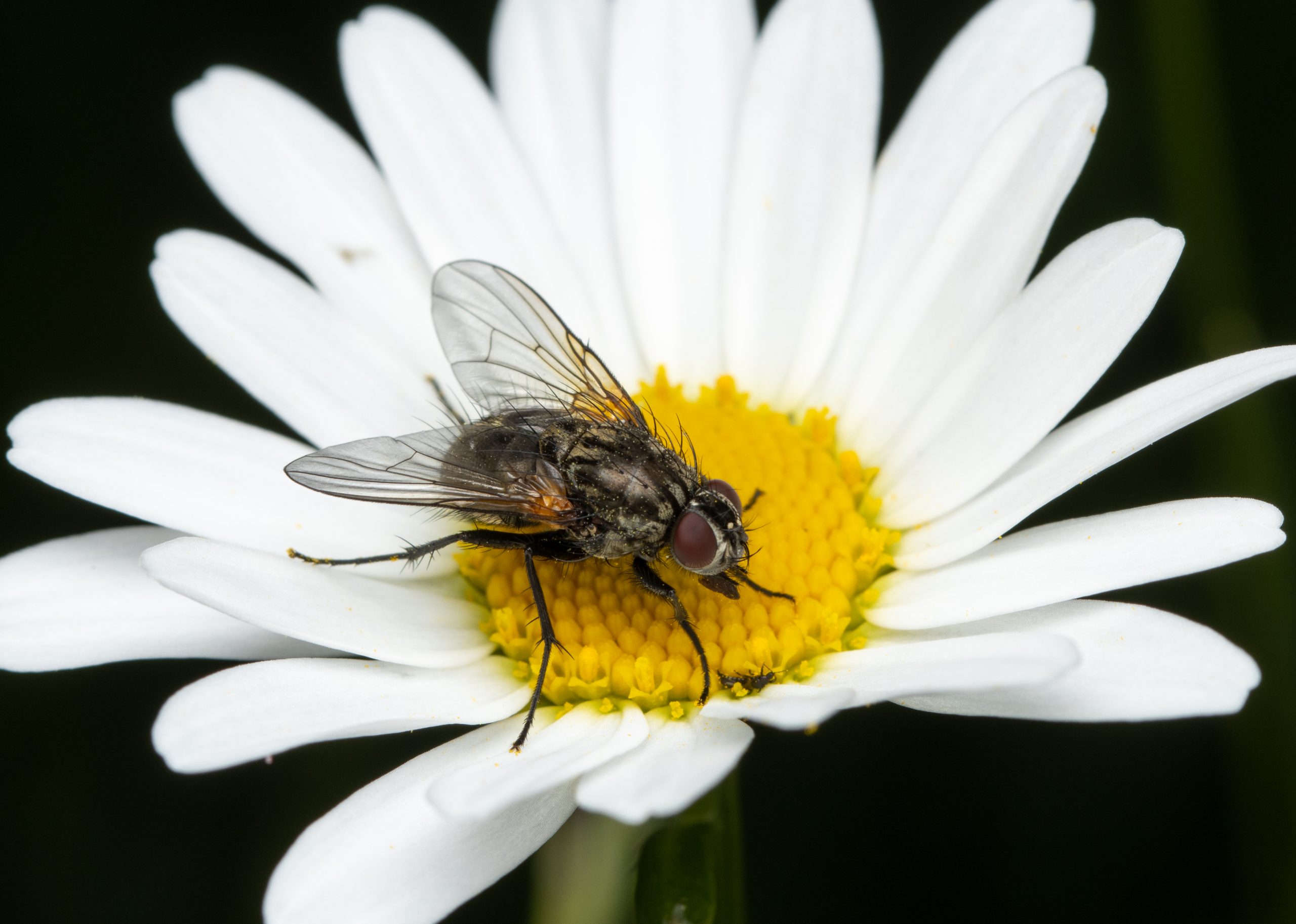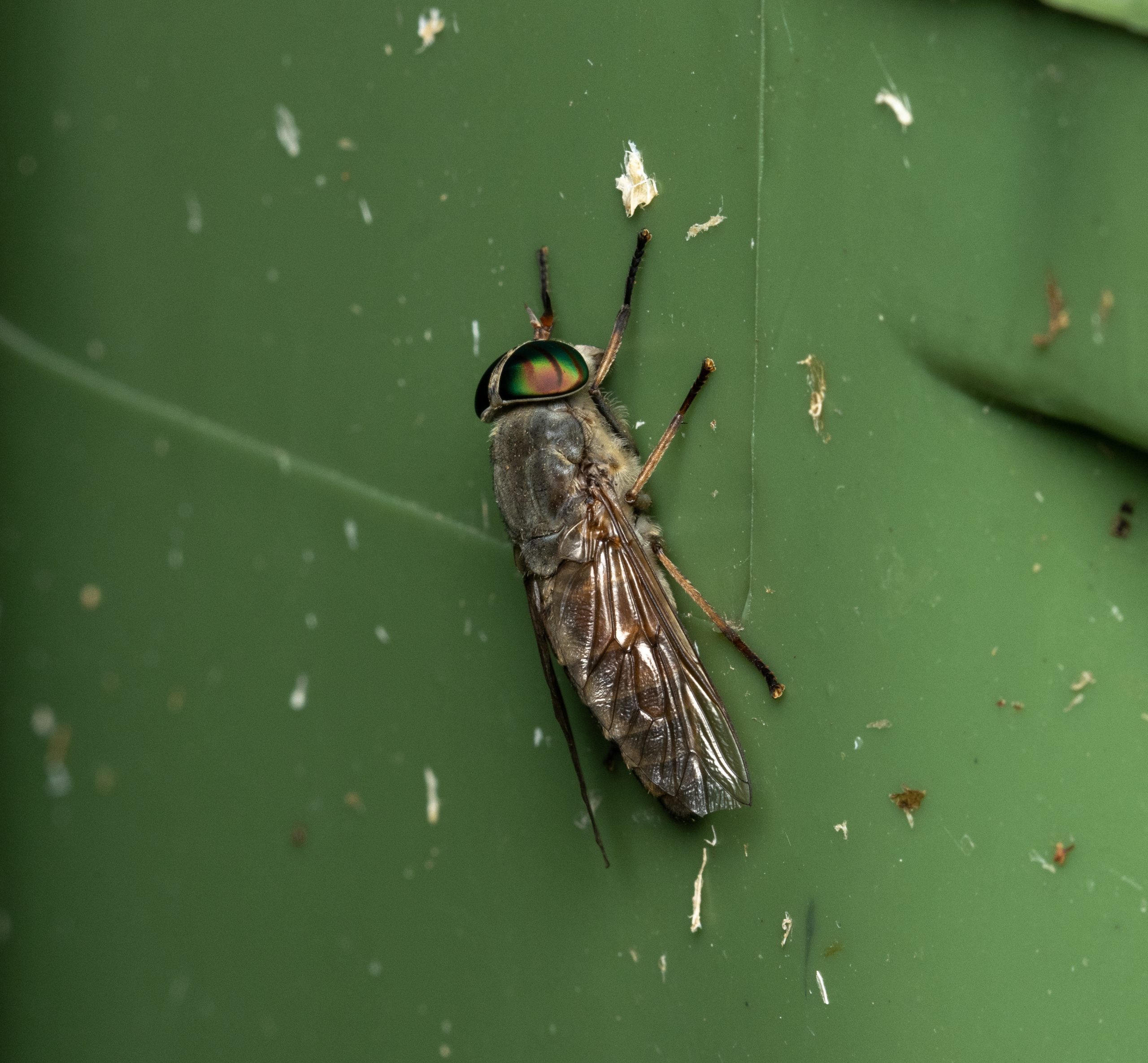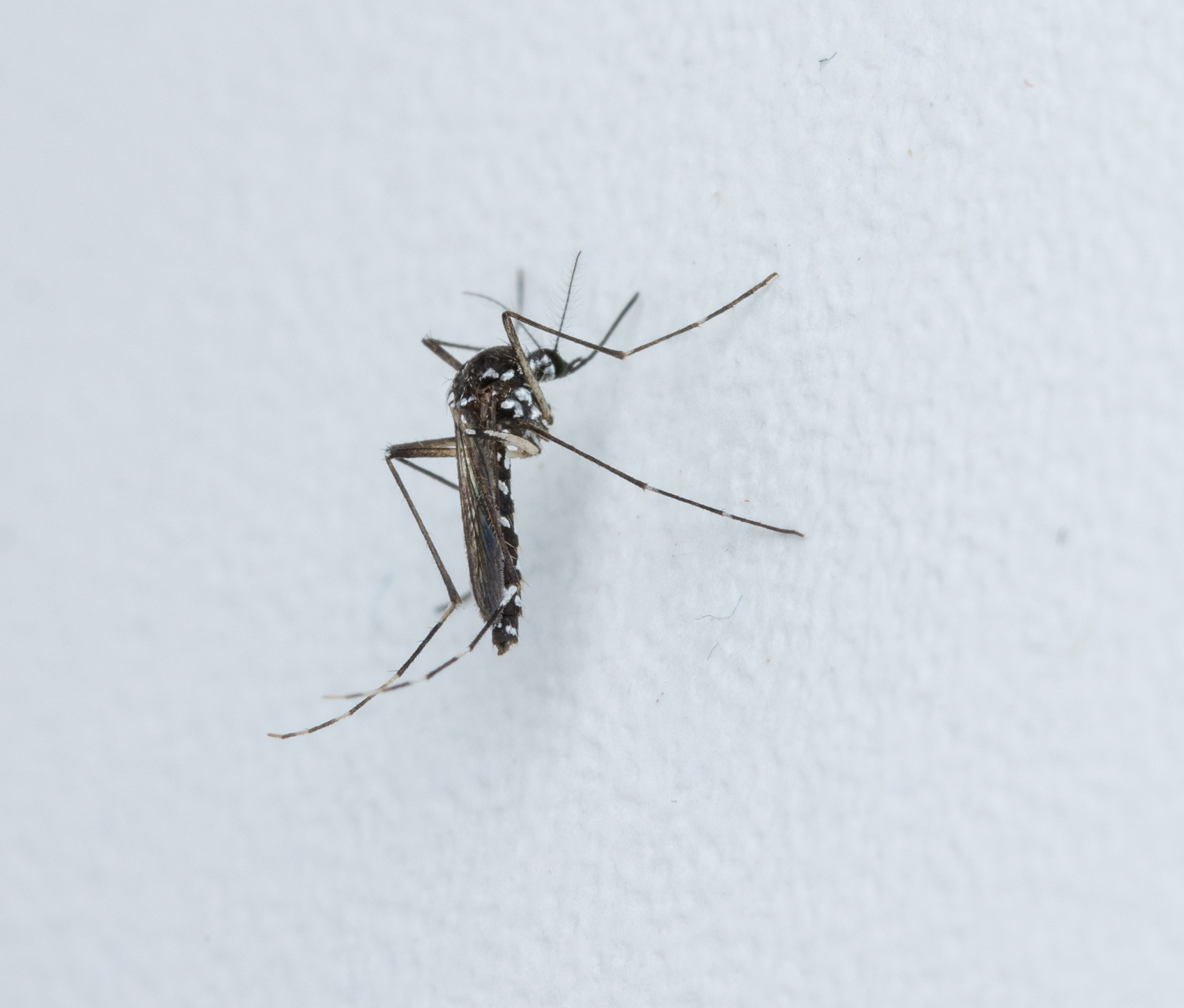- Insects
Panorpidae
The body of the scorpionfly comprises a head (cephalon), thorax and abdomen. The head is characteristically elongated and beak-like. At the tip of the elongated head are located the mouth parts specialized for biting and cutting. In addition, a pair of compound eyes and a pair of long, filamentous antennae are found on the head. There are three thoracic somites, pro-, meso- and metathorax; the first is small, and the second and third are large. Each thoracic segment bears a pair of legs. The first pair is short and oriented forward. The last two pairs of legs are longer, with strong femurs and face backwards. Moderately densely veined membranous wings originate from the second and third thoracic segments. The wings are transparent with irregular dark spots. When at rest, they are folded flat, slightly at an angle to the longitudinal axis of the body. The abdomen is articulated. In males the end of the abdomen is modified into an inflated penis with pincers, which resembles a scorpion’s telson, transformed into a venomous stinger.
The scorpionfly family is small and contains approximately 300 species, of which five are found in Slovenia. Scorpionflies are forest dwellers; they seek shady and moist places on trees and bushes. They are mostly scavengers, rarely also predators. Males and females pre-mating communication employs private calls, i.e., substrate-born vibrations trigged by tremulation of animal’s wings and abdomen. The larvae, like their adults, feed on carrion.
More photos
Related arthropods

Authors
- Urban Bogataj,
- Gregor Bračko,
- Teo Delič,
- Cene Fišer,
- Žiga Fišer,
- Rok Kostanjšek,
- Rudi Verovnik,
- Miloš Vittori,
- Valerija Zakšek.
Students Vito Ham, Vesna Jurjevič, Gaj Kušar, and Adrijan Samuel Stell Pičman also participated in the project.
